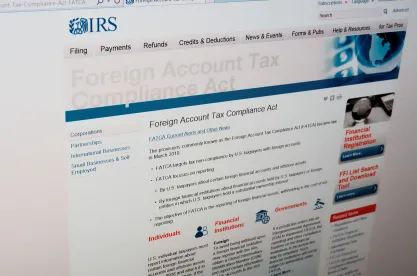On August 11, 2023, Stamford, Connecticut-based hedge fund manager Point72 Asset Management (“Point72”) filed a petition with the Tax Court contesting the IRS’s position that its owner, billionaire and New York Mets team owner Steve Cohen, cannot claim the “limited partner” exception to exclude US$344 million in partnership income from self-employment tax.1 Point72 is not alone. Similar petitions have been filed by NYC-based hedge fund manager Soroban Capital Partners in July 20222 and more recently by Boston-based private equity firm Denham Capital Management in June 2023.3 These petitions are all notable because they would represent the first time a court rules on how the “limited partner” exception to self-employment tax applies to an “active” limited partner of a state-law limited partnership.
Social Security and Medicare are funded by both a Federal Insurance Contributions Act (“FICA”) tax on wages and Self-employed Contributions Act (“SECA”) tax on net earnings from self-employment. While FICA taxes are shared by the employee and the employer, the self-employed must pay both the employee and the employer share of SECA taxes (but are permitted to deduct half of the self-employment tax as a business expense). Under Sections 1401(a) and (b),4 the SECA tax applies to “self-employment income,” which Section 1402(b) defines as the “net earnings from self-employment.” Section 1402(a), in turn, defines “net earnings from self-employment” as “. . . the gross income derived by an individual from any trade or business carried on by such individual, less the deductions allowed by this subtitle which are attributable to such trade or business, plus his distributive share (whether or not distributed) of income or loss described in section 702(a)(8) from any trade or business carried on by a partnership of which he is a member. . .” However, Section 1402(a)(13) excludes from this definition “. . . the distributive share of any item of income or loss of a limited partner, as such, other than guaranteed payments described in section 707(c) to that partner for services actually rendered to or on behalf of the partnership to the extent that those payments are established to be in the nature of remuneration for those services. . .” (Emphasis added.)
Neither the Code nor the Treasury Regulations define “limited partner” for this purpose. Such a definition was not necessary when Section 1402(a)(13) was added to the Code in 1977. According to the legislative history, Congress added the exception to preclude limited, or “inactive,” partners of limited partnerships from acquiring social security benefits on their investment income in such limited partnerships.5 At the time, limited partners were almost always “inactive.” Today, however, limited partners of limited partnerships are often “active.” For example, the above petitions show how fund management companies can be organized as limited partnerships and actively run by their limited partners.
In 1997, Treasury and the IRS proposed regulations defining a “limited partner” for purposes of Section 1402(a)(13).6 The proposed regulations, which applied to all tax partnerships (including LLCs), said that that an individual could not be a limited partner if he (1) had personal liability for debt of or claims against the partnership, (2) had authority to contract on behalf of the partnership, or (3) participated in the partnership’s trade or business for more than 500 hours during the year. But Congress quickly issued a one-year moratorium preventing Treasury from issuing temporary or final regulations that define a limited partner.7 Although this moratorium has long since expired, Congress has not taken any further action to define a limited partner, and Treasury has never finalized the 1997 proposed regulations. Nevertheless, in the absence of legislative action, the IRS maintains that it will respect a partner’s status as a limited partner only if it so qualifies under the 1997 proposed regulations.8
The IRS has successfully challenged the application of the limited partner exception by active owners of various types of passthrough entities, including LLPs9 and LLCs.10 But no court has yet considered whether an active limited partner of a state-law limited partnership can claim the limited partner exception. In the absence of congressional action – or at least in the absence of final regulations – most tax practitioners believe the IRS position to be wrong. On its face, Section 1402(a)(13) exempts limited partners. However, the facts of Point72 are more troublesome. Although the management company was organized as a limited partnership, Cohen indirectly wholly owned both the general partner and the sole limited partner, thus inviting the Tax Court to disregard the existence of a tax partnership. The outcomes of these cases are uncertain and they could turn on the specific facts of each case.
If the taxpayers lose in these cases, an alternative strategy for a fund manager to avoid self-employment taxes could be for each individual manager to hold his or her interest in the management company through a personal S corporation. While both partnerships and S corporations are passthrough entities, each shareholder’s distributive share of the S corporation’s income is not subject to self-employment tax, regardless of the shareholder’s level of participation in the management of the S corporation.11 While an S corporation’s shareholder-employees must pay themselves at least a “reasonable compensation,” which is subject to FICA tax,12 any amounts above that which are required to be included in each shareholder’s gross income do not constitute “net earnings from self-employment” under SECA. However, we would still suggest organizing the management company as a limited partnership rather than an LLC. We also would suggest limiting any S corporation to a single shareholder, since multi-shareholder S corporations can raise a number of concerns.13
1 Point72 Asset Management, L.P. v. Commissioner, Dkt. No. 12752-23.
2 Soroban Capital Partners LP v. Commissioner, Dkt. Nos. 16217-22 and 16218-22.
3 Denham Capital Management LP v. Commissioner, Dkt. No. 9973-23
4 All Section references are to the U.S. Internal Revenue Code of 1986, as amended, or the Treasury Regulations promulgated thereunder.
5 House Report No. 95-702, Part 1, to accompany H.R. 9346, October 17, 1977.
6 REG-209824-96.
7 Section 935 of the Taxpayer Relieve Act of 1997, P.L. 105-34.
8 See IRS Practice Unit, available at https://www.irs.gov/pub/irs-utl/pst_c_366_01_01_01.pdf.
9 See, e.g., Renkemeyer, Campbell & Weaver LLP v. Commissioner, 136 T.C. 137 (2011).
10 See, e.g., Riether v. United States, 919 F. Supp. 2d 1140 (2012); Castigliola v. Commissioner, T.C. Memo. 2017-16.
11 Rev. Rul. 59-221, 1959-1 CB 225.
12 See, e.g., Rev. Rul. 74-44.
13 Such concerns include the prohibition against a “second class of stock” and exits. Divorce also can raise issues.





 />i
/>i

